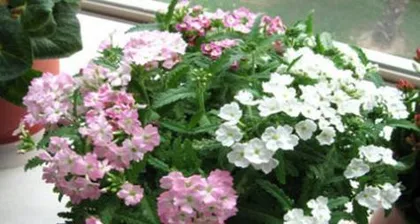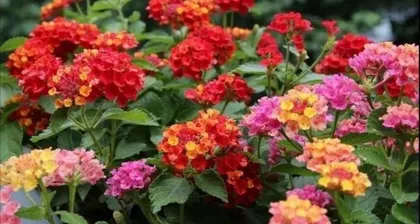Is Lantana poisonous? Can it be kept indoors? -- A Guide to Indoor Lantana Care

Lantana, also known as Crape Myrtle, is a common ornamental plant. It is widely loved for its gorgeous flowers and diverse colors. However, many people still have doubts about whether Lantana is poisonous and whether it can be kept indoors. This article will address these issues, providing readers with a detailed introduction to the toxicity of Lantana and proper methods for its indoor care.
I: Overview of Lantana's Toxicity
Lantana belongs to the Loganiaceae family and contains a toxic component—rotenone, which can cause toxic reactions. Additionally, Lantana pollen can also cause pollen allergies. Caution is needed when cultivating Lantana.

II: Harmful Effects of Lantana on the Human Body
The toxic component in Lantana, rotenone, can cause poisoning symptoms in humans such as nausea, vomiting, dizziness, and diarrhea, and in severe cases, can even be life-threatening. Pollen allergies can lead to discomfort such as sneezing and a runny nose. Careful precautions are necessary.
III: Indoor Care Environment for Lantana
Lantana thrives in a warm, ventilated, and humid environment, so the indoor care conditions must be suitable. You should choose a windowsill or room with ample sunlight and good air circulation, avoiding direct sunlight or cold drafts.
IV: Soil Requirements for Lantana
Lantana does not like soil that is too wet or too dry. You should use well-draining soil rich in organic matter to ensure healthy root growth.

V: Watering Methods for Lantana
When watering Lantana, pay attention to using a moderate and even amount, avoiding too much or too little. The soil should not be kept too moist or too dry. You can use methods like misting or placing the pot in a tray of water.
VI: Fertilizing Methods for Lantana
Lantana needs appropriate fertilization during its growth period. Generally, you can choose organic fertilizers or compound fertilizers. However, fertilization should be moderate; excessive amounts can lead to poor growth and affect the plant's health.
VII: Pruning Methods for Lantana
Lantana should be pruned promptly during its growing season to maintain a neat shape. Pruning can be done in spring and autumn, but it is not advisable to prune in winter.
VIII: Pest and Disease Control for Lantana
During its growth, Lantana is susceptible to pests and diseases, such as red spider mites and aphids. Insecticides and pesticides can be used for prevention and control.
IX: Precautions for Indoor Lantana Care
When caring for Lantana indoors, you should be cautious of its toxicity and avoid direct contact with the body. At the same time, ensure that indoor conditions such as humidity and temperature are suitable.
X: Flowering Period and Flower Language of Lantana
Lantana generally blooms from summer to autumn. Its flower language is 'reminiscing about the past' and 'cherishing memories,' symbolizing endless thoughts and attachment.
XI: Planting History and Variety Characteristics of Lantana
Lantana has a long history of cultivation since ancient times. The main varieties include red, white, and purple Lantana, each with its own unique characteristics.
XII: Cultivation and Propagation Methods for Lantana
The main cultivation and propagation methods for Lantana include cuttings, sowing seeds, and division. You can choose the appropriate method based on your own situation.
XIII: The Application of Lantana in Culture and Art
Lantana is widely used in culture and art, such as in poetry, calligraphy and painting, and garden design, becoming an important part of traditional Chinese culture.
XIV: Care Tips for Lantana
When caring for Lantana, it is important to avoid direct contact between the caregiver and the plant to prevent health effects from its toxicity. At the same time, pay attention to techniques for watering, fertilizing, and pruning.
XV:
When keeping Lantana indoors, its toxicity must be considered, but as long as you care for it properly, you can enjoy its beautiful flowers. We hope this article can provide useful guidance for readers, making it easier for you to care for your Lantana.